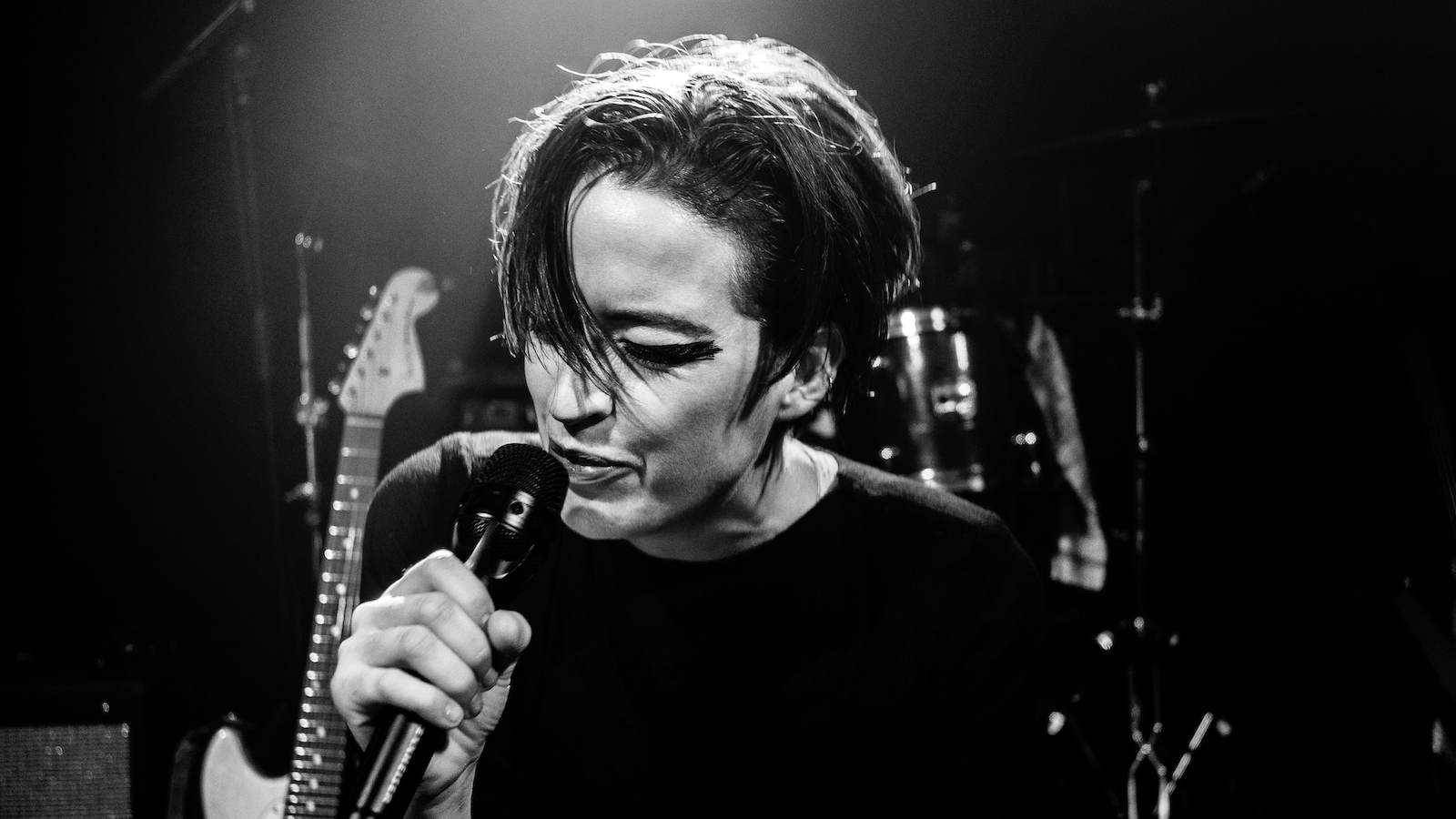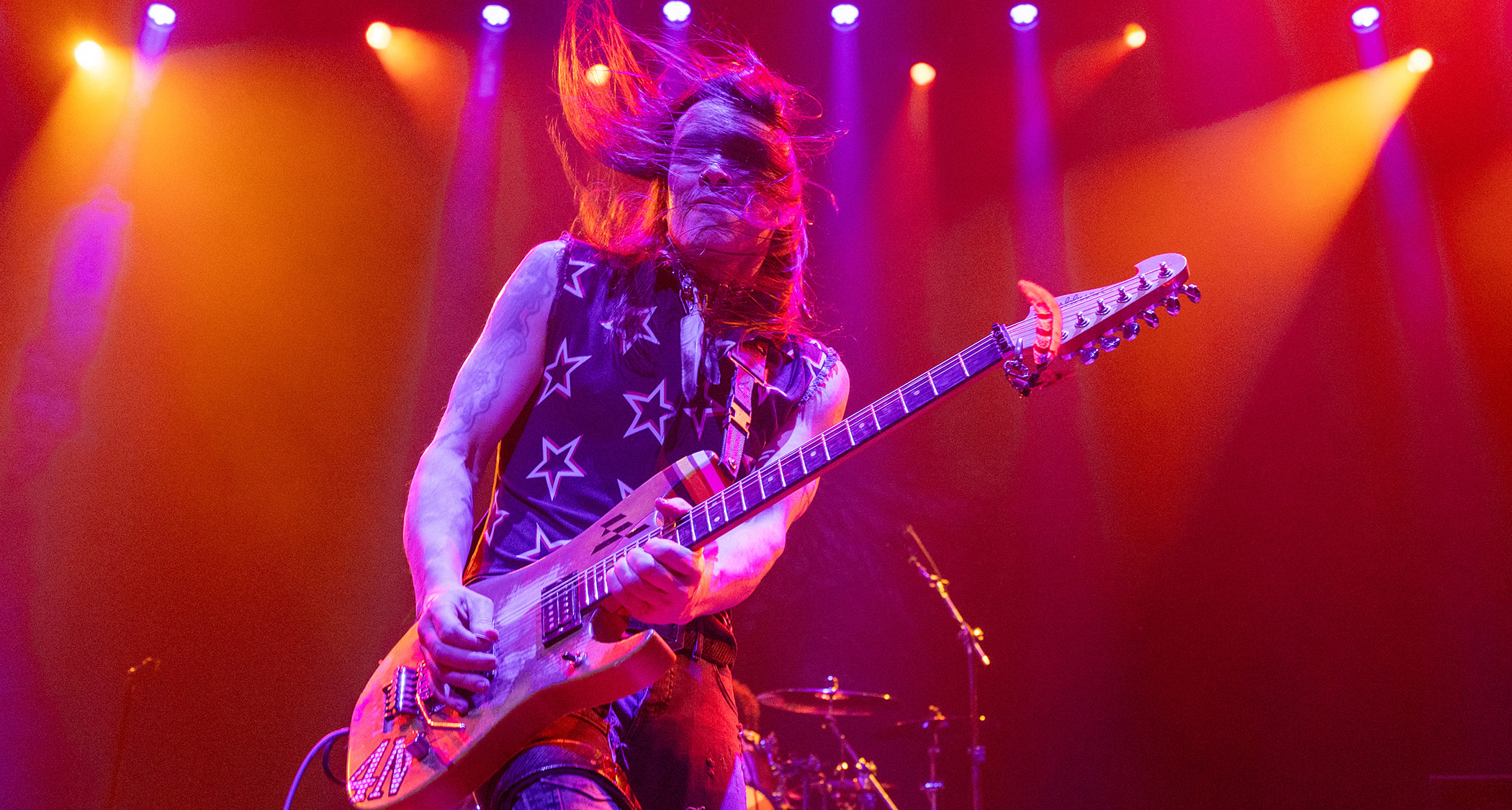Megan Washington: The Most Bountiful Harvest
Six years in the making, Megan Washington makes a career-defining declaration of personal growth and powerful self-realisation with Batflowers.

Before she even released 2014’s deservedly acclaimed There There, Megan Washington was earnestly chipping away on what would become the multi-hyphenate Brisbanite’s third studio album, Batflowers. But it wasn’t an easy project for her to conjure up – not the least of which because it came to life amidst a great time of personal (and professional) evolution for Washington.
“It’s been a bit of a Rorschach test for me,” she admits to us in call; “I thought this album was a few different things before I realised it was a Batflower.”
So how did this record shapeshift from what you initially thought it would be into what we hear today?
Well, that it took six years is probably testament to the fact that it’s gone through a few incarnations! I think I was really searching for something, and it’s been there in a whole bunch of different forms – the album title was Achilles Heart, then it was Sugardoom and there was all this other crazy bullshit, and then… I don’t know, I just never really accepted those versions of the album; I didn’t love them. They didn’t feel real after a while, or they didn’t fit the form I was trying to shape for it. What I was trying to find was a little more unconscious and sort of harder to put my finger on.
When I decided to really get serious about making the album, it was because I wrote the title track last. I wrote the music last November while I was in LA for a film thing – I did a session with this guy, Rabbit, because I really like him and we work really well together; we made this track, but I couldn’t quite find the top line, so I took it home and sort of chipped away at it over the next few months.
And then in February, I was going over to Berlin for the Berlinale, and we booked our tickets via LA because Asia was really hectic with the Coronavirus, and we thought that would be safer or whatever. But our flight to LA got delayed, so we were late with our connecting flight and we had to stay overnight. So I rang Rabbit and said, “Hey, surprise, I’m in LA! Can I come and track vocals for this song?” And he said, “Yeah, of course!” It was, like, 11 o’clock at night on a Saturday, and we just went into the studio and bashed it out.
Once I’d done that, I was like, “Wow, I think this is a good time to really make this record – it really wants to come out now!” So I just kept working on it! I was like, “Okay, what this world really needs at the moment, and what I can offer as an artist, is some fun.” I wanted to give some contrast to what’s happening on the planet right now, which is so serious.
It goes without saying that you are an exceptionally busy woman, between voicing a character on the kid’s show Bluey, projects like the CrossBread podcast, being a mother… Did all of those inform what this album would grow to become over time?
1,000 percent! Working in theatre is actually what really made me able to see music clearly – realising that there’s a world beyond the music, and the music is just one part of the storytelling. Because we have eyes and ears, right? I never really had a relationship with my eyes – and I know that sounds funny, but I’ve never really thought about it as a multi-sensory thing.
All the latest guitar news, interviews, lessons, reviews, deals and more, direct to your inbox!
But then when I started animating… I’ve always drawn pictures, but I never really made it my identity or focussed on it at all; I’ve always had that sort of visual affability, but it was so repressed and twisted that I didn’t really exercise it at all. So when I started animating the lyric video for “Dark Parts”, it all just connected for me.
Hand-drawn animation is so labour-intensive, but it really works for me. It’s really good therapy because it’s so painful and I suffer so much while I’m doing it, but what I do when I’m drawing is really dumb and simple, because it’s all I have the skill for. Like, drawing a googly eye 100 times in a row is just the right sort of balance between being very, very serious and being as dumb as possible.
I guess what I’ve realised is that when I turn my art dial up to ‘very serious’ and my ‘taking myself seriously’ dial right down to zero, I end up with something that actually feels really good to make and really fun to share. Because I just don’t see myself as a musician. Washington – she’s a choice. She’s my avatar, y’know what I mean? It’s like when those games go, “Choose your fighter!” I choose Washington.
There’s a power in lightheartedness where you can have something so off-the-walls and ridiculous, but underneath it lie such a powerful emotion, theme or story.
It’s all about leaning into the feeling of fear. I think the biggest motivation for this record was that in order to complete it in this current version of the world, I had to lean into so many of my fears. I mean, all the producers on it are all of my dream producers – I was like, “Okay, so hypothetically, it’s the end of the world, and you need to make an album in isolation – who would you ask?” And I was like, “Well, I would ask John Congleton!”
I actually did ask him last year, but he was so busy that it wasn’t possible. But I was like, “Okay, it’s the end of the world, I have to make this isolation album, and I would ask John to produce for me.” So I sent him another email, and he was like, “Yeah, I’ve got time now! Let’s do it!” And so all of these things just became amazingly possible. All these people who I just adore and have wanted to work with for such a long time suddenly all had time, and I had the energy, so we did it!
It’s been a real labour of love for everybody, because everyone’s just brought so much to the record. It’s been recorded remotely from all over the world and in all different sorts of situations and time zones.
Would you say this record is the culmination of everything you’ve learned as an artist thus far?
Here come the cliches, but yes, definitely! The real birth of this album was this psychological breakdown I had in Minjerribah, which is on Stradbroke Island where I spent a big portion of lockdown. I was tracking vocals for John – he sent me a track and I was trying to sing over it, but I didn’t know who to be for the performance. I did a chilled-out vocal take, and then I did an intense vocal take, and then I did a dramatic vocal take, and then I did a lazy vocal take… Then I was adding harmonies and trying to figure out how to toggle the beeping on and off in Logic so I could send him the session…
It was just all so much, so I rang my friend Sam in London to be like, “What’s the best way for me to send him all these vocal options so he can like choose which me he wants me to be in the thing, because he’s not in the same room as me?” And Sam was like, “You need to choose the vocals that you want to send him, and send him the vocals. You need to be Kanye West just own it.” And I was like, “Oh… I can do that!?” And he was like, “…Yeah dude. It’s your song. The producer is just there to help you as much or as little as you need.” And then I was like, “Well, I reckon I should sing it like this because this is what feels good.” And that’s what’s on the record. It was just this realisation that there’s nobody in charge of me except me.

Ellie Robinson is an Australian writer, editor and dog enthusiast with a keen ear for pop-rock and a keen tongue for actual Pop Rocks. Her bylines include music rag staples like NME, BLUNT, Mixdown and, of course, Australian Guitar (where she also serves as Editor-at-Large), but also less expected fare like TV Soap and Snowboarding Australia. Her go-to guitar is a Fender Player Tele, which, controversially, she only picked up after she'd joined the team at Australian Guitar. Before then, Ellie was a keyboardist – thankfully, the AG crew helped her see the light…
